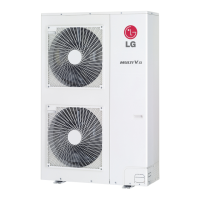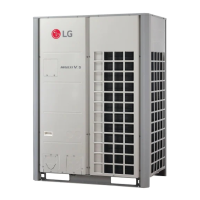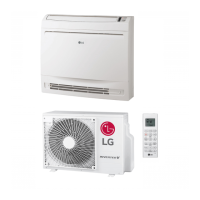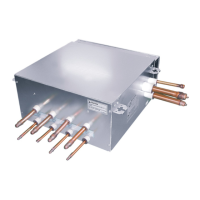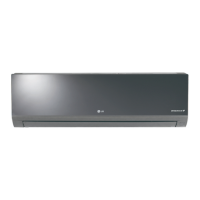192
MULTI V 5 Outdoor Unit Service Manual
Due to our policy of continuous product innovation, some specifications may change without notification.
©LG Electronics U.S.A., Inc., Englewood Cliffs, NJ. All rights reserved. “LG” is a registered trademark of LG Corp.
ERROR CODES
Please refer to the Safety Precautions on pages 4-7 for more detail to prevent injury or death regarding the operation and service
troubleshooting of the Multi V product.
WARNING
Error No. 150
Error No. Description Details Causes
150
Master: 1501
Slave 1: 1502
Slave 2: 1503
Outdoor unit
compressor
discharge
superheat not
satisfied.
Code indicates that based on current superheat measurements,
there is a high possibility of liquid refrigerant flooding back and
damaging the compressor.
'LVFKDUJHVXSHUKHDWLV)OLTXLGE\SDVVIRUPLQXWHV
Code can only occur when the outdoor is operating in cooling mode
(all indoor units must be in cooling mode; error cannot occur during
simultaneous operation).
The first time superheat falls <4.8ºF (<3ºC) for 5 minutes, the sys-
tem will shut down and CH150 is displayed on all indoor unit zone
sensors and central control devices. After the initial occurrence, the
outdoor unit cycles off and will auto-restart.
Following the initial restart, and after 10 minutes of operation to al-
low the system time to stabilize, if the superheat again falls <4.8°F
(<3ºC) for 5 minutes, the system will shut down and auto restart for
a second time.
If error occurs 3 times within any 1 hour period of compressor oper-
ation, the error code will be assigned a Level 3, and the system will
shut down and remain off. A manual restart will be necessary.
After at least 10 minutes of
compressor operation, the master
outdoor unit microprocessor will
calculate the system’s compressor
superheat. If at any time during
compressor operation where all
indoor units in thermal on are in
cooling mode and the compressor
superheat falls <4.8°F (<3ºC) for
PLQXWHVWKHUHLVDKLJKSURED-
bility that liquid could flood back to
the inlet of the compressor scroll,
resulting in compressor damage.
1. Indoor unit EEV has disconnect-
ed or short circuited.
2. Defective compressor EEV
(large refrigerant leak has
occurred).
3. Defective liquid piping and / or
vapor piping connections.
*Excessive refrigerant leak: Both the piping inlet and outlet temperatures are <50°F when the indoor unit is off (EEV 40 pulses). Also, a loud
refrigerant flow noise was heard.
Is there an indoor unit
that is leaking a large amount of
refrigerant?*
Check liquid and vapor piping
connections.
No
Yes
Is the EEV coil assembly
correct?
No
Replace EEV assembly.
Re-assemble or replace the
EEV coil.
Yes
Are the EEV connections
correct?
Yes
Connect EEV connections.
The compressor EEV or circuit
leaking?
Replace the compressor EEV
or EEV assembly.
Yes
No
No

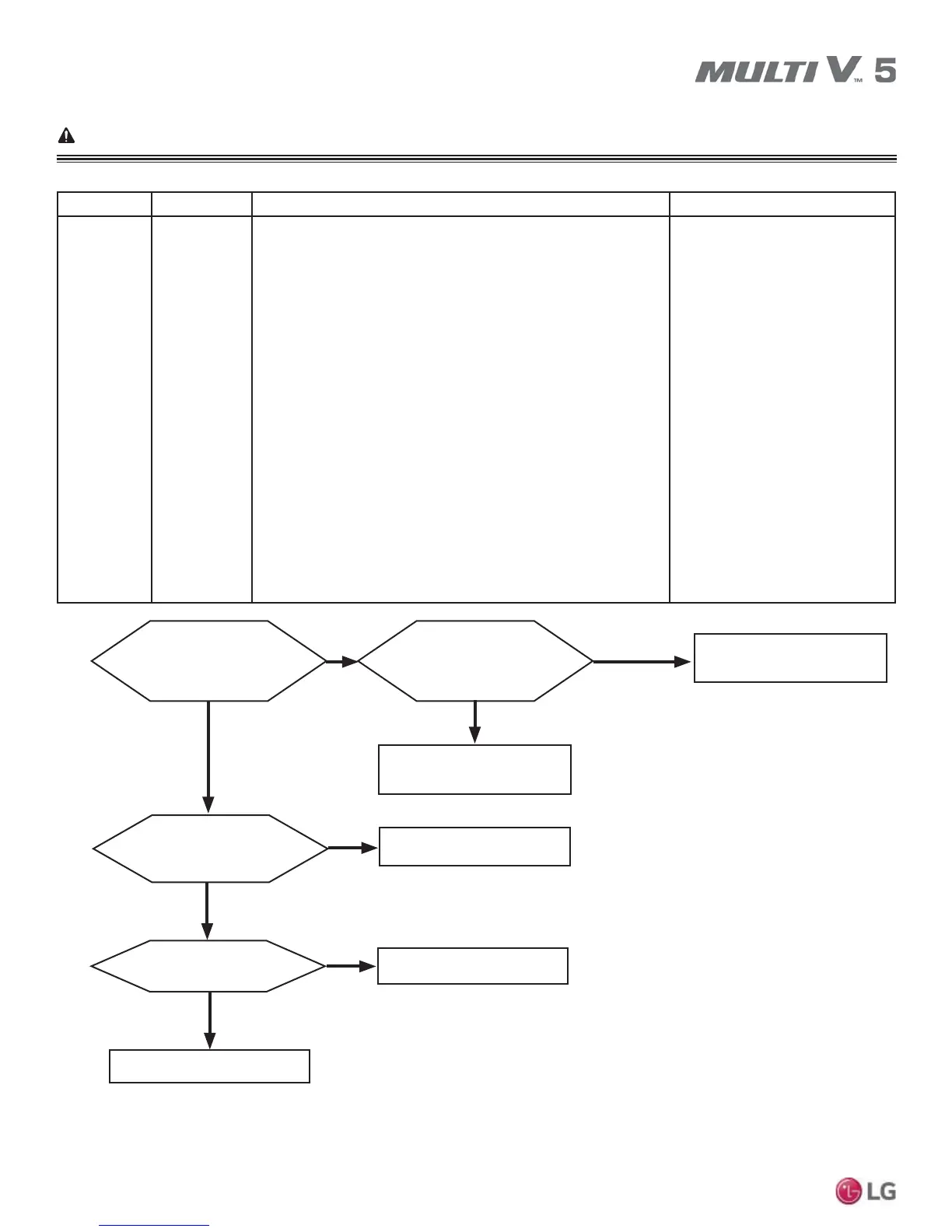